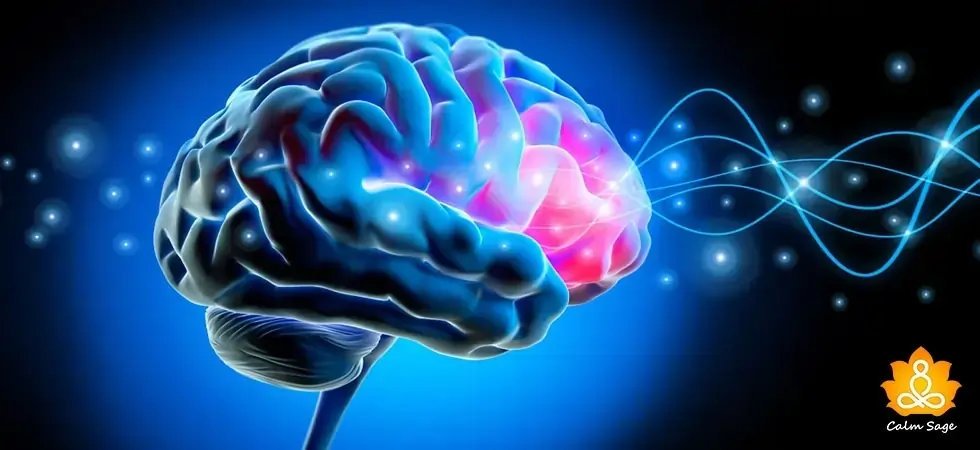What is the Polyvagal Theory? Origin and Polyvagal Exercises

Recently, it has been discovered that the interaction between a few parts of the brain can heavily influence our physical, emotional, and mental health. There has been a lot of discussion on the influence of the vagus nerve, to be very specific.
Polyvagal theory has been proved many times throughout history with the results it generated in several studies and research projects. A 2023 study, yet again, produced results in favor of the polyvagal theory. The study stated that if we continue to explore the abilities of the vagus nerve, it will be extremely beneficial in finding appropriate treatment for mental and physical conditions.
To understand the functioning of the vagus nerves and what it does that can be so beneficial for us, you need to learn about polyvagal theory. In this blog, we are going to do just that, we will try to explore all aspects of polyvagal theory and how it can be applied.
Shall we begin?
What Is Polyvagal Theory?
The polyvagal theory claims that when we reduce the tension in our automatic state that influences our threat response and increases states that foster feelings of safety, we can maintain our psychological well-being.

It also states that when we manage to balance our feelings of threats and safety, it can help us manage and cope with symptoms of trauma and trauma-related disorders. According to a 2022 study (Neuhuber & Berthoud), knowing the ability of the vagus nerve can help in treating severe conditions like depression and anxiety as well.
Let me explain the polyvagal; theory to you in simple terms. Our brains can be divided into various parts that continuously interact with each other. One of its parts is called the autonomic nervous system.
Our autonomous nervous system is further divided into two parts – the parasympathetic system and the sympathetic adrenal system. Both these systems are the two most important factors in polyvagal theory.
- Parasympathetic system: is responsible for keeping your mind and body calm, controlling your heart rate, keeping your digestive system comfortable, etc.
- Sympathetic adrenal system: is responsible for an action state of mind. It helps you fight danger (fight-flight response).
Now, the polyvagal theory states that both the parasympathetic system and the sympathetic system are in constant interaction. When you are not troubled by any condition (mental/physical) there happens to be a two-way smooth flow of information between the two systems.
When this flow is interrupted, the harmony breaks and problems arise, as proven by a study conducted by Bridges & Porges in 2015. However, it is not always bad to have our fight-and-flight response activated, it is our primary survival mechanism.
The theory also states that oftentimes long after the threat/danger has passed, our mind and body remain in the fight and flight response. It happens because trauma has not left your mind or body. Being in this state for a prolonged period can make you develop conditions like depression and anxiety.
The National Institute for the Clinical Application of Behavioral Medicine in 2022 stated that in trauma treatment the focus is more on the physiological responses rather than the psychological ones.
Origin Of Polyvagal Theory
Stephen Porges from the Traumatic Stress Research Consortium at Indiana University developed the Polyvagal theory in the early 1900s. According to his research, he found that there is a link between the vagus nerve functions and our social behavior, behavior, and psychological disorders.
The vagus nerve connects the brain to various organs and vice versa. This is why it plays a huge role in regulating our mind and body functions. The Polyvagal theory focuses on the autonomic nervous system and its three main states;
- Ventral vagal state: it is the calm state where emotional regulation, problem-solving, and social engagement are the main functions.
- Sympathetic state: it is the fight-flight state where reaction to fear, anxiety, and threat are the main functions.
- Dorsal vagal state: produces the shutdown response which can further develop feelings of dissociation and disconnection.
According to the polyvagal theory, when our mind detects a threat, it directly attends to our autonomic nervous system. In order to keep a balanced state of mind, one needs to send cues of safety to the mind so that it comes out of the threat-induced state of mind.
According to polyvagal theory, there is a particular reaction pattern of our mind to process stress. It begins with being in a Vagal state (calm) → Sympathetic state (anxious)→ Dorsal state (shame). Now to come back to homeostasis your brain needs to take the reverse gear {Dorsal state → Sympathetic state → Vagal state}.
Polyvagal Exercises Used In Therapy
1. Breathing exercises
- Deep and slow breathing: with this kind of breathing, you are stimulating your vagus nerve which then reduces anxiety and helps you calm your mind and body.
- Anchor breathing: in this type of breathing, you need to maintain a balance of deep and slow breathing while visualizing an anchor where you want it to be.
- Alternate nostril breathing: in this type of breathing, you need to inhale from one nostril and exhale from the other.
- Box breathing: in this type of breathing, you have to inhale and exhale following a box pattern, moving from one corner to another.
2. Meditation and mindfulness
Meditation and mindfulness again have a lot to do with your breathing and calming your mind and body. When you sit and meditate, it has a direct influence on the functions of your vagus nerve.
3. Somatic experiences
Somatic experiences include activities like singing, humming, dancing, tactical sensations, etc. When you engage in such a somatic experience you contribute to relaxing your stress responses.
4. Cold water exposure
You must have heard of the ice bucket challenge, ice water baths, etc. all are different methods of cold-water exposure. Submerging in cold water for 30 seconds can help you calm your fight and flight response.
That’s All Folks!
I hope you found this blog about polyvagal theory helpful, interesting, and informative. Do share this blog with your friends and family so that we all know how our mind reacts to stress and understand the importance of the vagus nerve.
Thanks for reading.
Take care and stay safe.




















